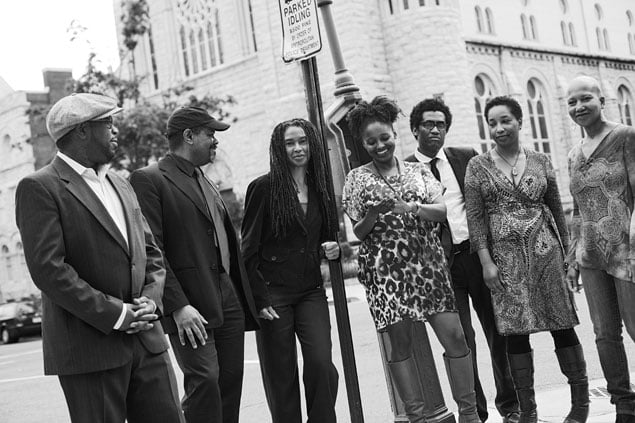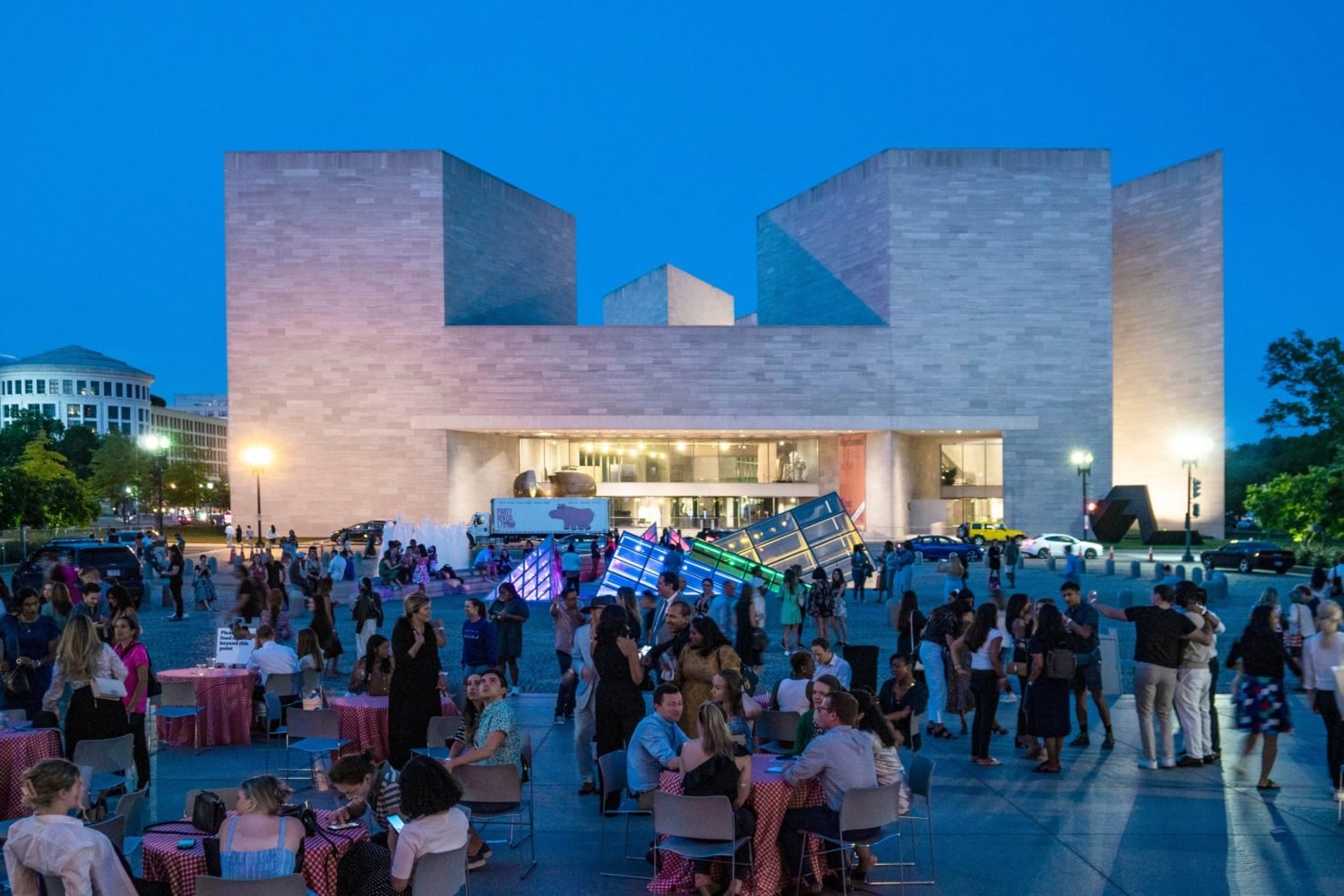Founded in Cambridge, Massachusetts, in the late 1980s, the Dark Room Collective helped foster a generation of African-American poets, from
Thomas Sayers Ellis and
Sharan Strange to
Major Jackson and
Kevin Young. More than two decades and two Pulitzer Prizes later, the group reunited at the Lutheran Church of Reformation on Capitol
Hill Monday for a reading at the Folger Shakespeare Library’s Poetry series.
The evening felt more like a church service or a rock concert than a poetry reading. Pews were filled to capacity as each
poet made his or her way to the microphone, reciting words in syncopated breaths with dramatic pauses between lines.
Present was Washington’s own
Thomas Sayers Ellis, a poet and photographer who cofounded the Dark Room Collective with poet
Sharan Strange at Harvard University* and Janice Lowe, who was a student at Berklee College of Music, in 1987. Over time the collective, based in a rent-controlled Victorian near Harvard Square, grew to
include scores of literary and visual artists. Also in attendance Monday were members
Tisa Bryant,
Major Jackson,
John Keene,
Tracy K. Smith,
Natasha Trethewey, and
Kevin Young. The reading marked the collective’s 25th anniversary and paid tribute to its influence and popularity among scholars and
academics over the decades.
“To us young aspiring artists, the Dark Room Collective
represented the tradition of making a way out of no way,” said Strange.
“[It was] a literary matrix where we could work out creative
ideas, share, and have some sense that someone had our back.”
Although the group was originally based in Boston,
Ellis’s Washington heritage played its own part. The city has a rich
poetic
history dating back to the 1920s, when Langston Hughes roamed
the streets of U Street with Zora Neale Hurston, before scholars
claimed both writers as leaders of the Harlem Renaissance.
“The way is there–you just need enough like minds
under the same roof to kick down doors,” said Ellis. “[The Dark Room
Collective]
gave me backup–[as a result] there were more voices; someone
would be heard. It didn’t matter which one, because it would
trickle down to the rest of us.”
And trickle it did. The eight members of Dark Room
Collective represent an accomplished group of writers, all of whom now
teach at elite colleges around the country. Among the
collective are two Pulitzer Prize winners: Natasha Trethewey won the
prize in 2007 for her collection of poems,
Native Guard*; and two weeks ago, Tracy K. Smith’s collection of poems,
Life on Mars, was selected as the 2012 winner. The
pride among the collective was palpable Monday, a testament to the
collective’s significance
as an artistic movement that broke barriers for
African-American poets. Ellis, Major Jackson, and John Keene all won the
coveted
Whiting award for their first books:
The Maverick Room,
Leaving Saturn, and
Seismosis, respectively. Sharan Strange won the prestigious Barnard Women’s Prize in Poetry for her collection of poems,
Ash. Kevin Young is the recipient of a Guggenheim Foundation fellowship. And Tisa Bryant’s work is an example of the ways in
which the collective fostered innovation and genre bending: Her book,
Unexplained Presence, is a collection of hybrid essays that remix narratives from film, literature, and visual arts.
More impressive than their résumés was the camaraderie
on stage. Invoking a tradition started at their Harvard home, members
randomly selected one another’s names out of a hat, giving the
reading a spontaneity rarely found at poetry readings. Natasha
Trethewey told the audience she didn’t feel nostalgic at all,
as the word implied a longing for a past that never was. Instead,
she said being at the Folger with the collective felt exactly
as it had many years before.
For more information on the Dark Room Collective, visit poets.org.
*This article has been updated from a previous version.















